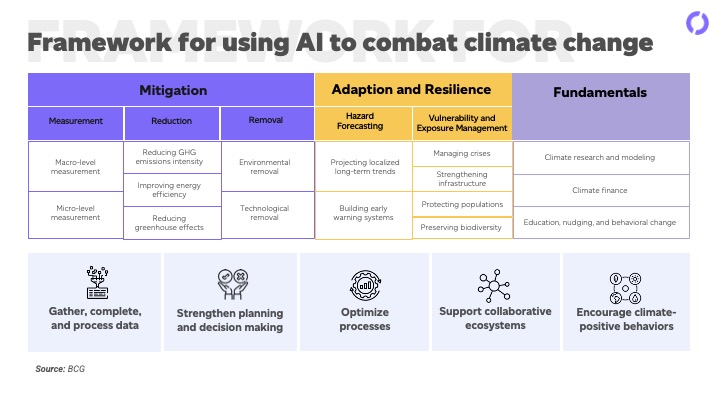The Emissions Reduction Potential of AI in the Energy Transition
13-07-2023
Summary
We are excited to share that Climate Connect Digital (CCD) hosted its webinar on the 24th of May. This impactful event was centred around Digital Measurement, Reporting, and Verification (DMRV). DMRV represents a paradigm shift in climate action, leveraging advanced technology to automate the precise measurement, reporting, and verification of greenhouse gas emissions and sustainability metrics. With the potential to significantly reduce the time it takes to verify carbon credits, DMRV has captured the attention of environmental enthusiasts and industry professionals alike.
During his presentation, Amit Narayan explained why he sees AI as a powerful tool to tackle climate change, and presented one of the most promising AI-powered energy solutions.
AI and climate tech
Due to its software-based asset-light nature, AI can enable faster scaling of solutions to reduce greenhouse gas emissions and mitigate their effects. Amit categorises the applications of AI in the context of climate tech into three broad buckets. The first of these includes improving the efficiency and productivity of operations and customer interactions. Generative AI, particularly large language models, can help engage customers and improve their experience, which is especially valuable in the energy sector.

The second category focuses on specific applications within the climate tech domain, such as measuring, monitoring, forecasting and reporting the impact of various solutions. Amit believes that advancements in AI, including convolutional neural networks (CNNs) and foundational models, can have a significant impact in these areas, spanning emissions from grids, buildings, transportation, farms, forests and industrial processes.
The third category involves the use of AI for scientific computation, enabling the discovery of new materials and advancements in chemistry, biology and physics. Although this area is still in the early stages compared to language models like ChatGPT, Amit expects to see more applications emerging here in the near future.
Virtual power plants (VPPs)
Amit emphasised the fact that energy consumption accounts for about two-thirds to three-fourths of all GHG emissions. Transportation and buildings alone account for over 50% of the total. In this context, Amit focused on a particular application of AI that he has been working on for several years: virtual power plants (VPPs). `
According to Amit, VPPs aim to convert energy usage into electricity from renewable sources like solar and wind. However, due to the intermittent nature of renewables and the lack of storage capacity, natural gas-based peaker plants are often used as backup power, which defeats the purpose of renewable energy. Peaker plants are not only more polluting but also disproportionately impact vulnerable populations and become unreliable during extreme weather events.
VPPs powered by AI can provide a solution by modulating supply and demand on the grid. Amit compares the concept to Uber, where energy assets such as HVAC systems and electric vehicles can be controlled by software to manage renewable energy variations in real time. This allows for a cleaner and more cost-effective grid, using underutilised assets such as EV fleets and school buses. AI plays a crucial role in connecting and integrating these assets, collecting and analysing data, and making millions of micro-adjustments based on forecasts to optimise supply and demand for the VPP. Furthermore, the revenue generated from VPPs can be reinvested into local communities, creating jobs and resilience.
Amit pointed out that the use of AI for VPPs effectively integrates all three of the use categories mentioned at the start, making it a compelling case study of AI driving the renewable energy transition.



